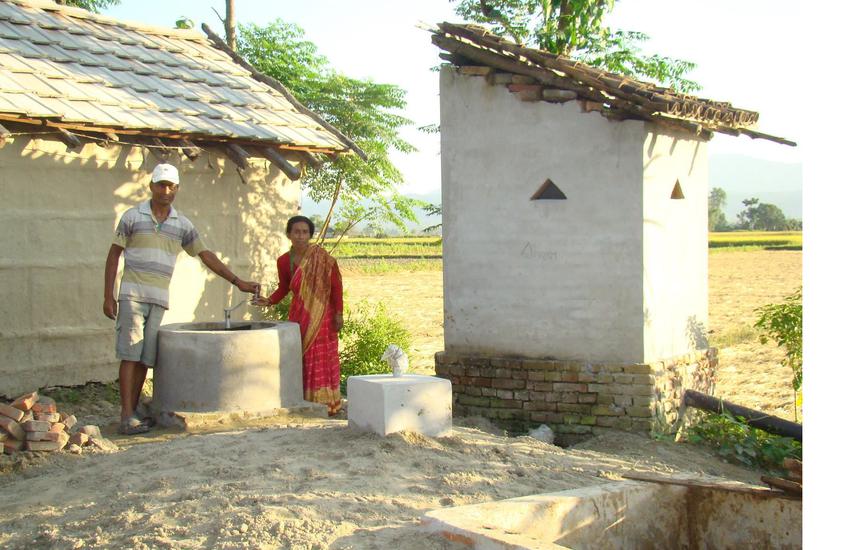The aim of the project is to impart knowledge on wild animals’ behaviour and ecology to the local community people residing near the protected area to maintain harmony between people and wildlife.

Victim and victim’s family-recipient of biogas plant.
Lack of knowledge on local people regarding the behaviour and ecology of the wild animals is one of the many reasons for human casualty by wild animals. Therefore, this study project entitled “Community Education and Outreach Program for Human-Wildlife Co-existence” has been designed to impart knowledge on the same through qualitative, effective and stringent conservation education and outreach program in the target group, especially, the people residing near by the forests, to achieve a substantial and long-lasting contribution to biodiversity conservation. In order to achieve this, the project has been designed to work on three aspects in the buffer zone of Chitwan National Park in Nepal. These are as follows:
a. To assess the existing conservation education program.
b. To impart knowledge to local community people on wild animals’ behaviour and tactics to be safe from aggressive wild animals.
c. To conduct drawing competition on human wildlife co-existence for school children from the buffer zone of CNP.
This project will help to understand the worth of the qualitative and effective conservation education and outreach program with claims at mitigating human wildlife conflict issues. It is a belief that real target group will be educated in wild animal’s behaviour, ecology, etc. which will help develop positive attitude towards wild animals and their conservation. Moreover, the local people will be alert enough to avoid unwanted encounters with wild animals which help to reduce human casualties. This will certainly control or if not, mitigate retaliatory and obligatory killing of wild animals thus by help to conserve wild animals including rare and endangered and at the same time “problem animals” such as rhinoceros, tigers, elephants etc.
The study will be carried out through literature review, interview, interaction, workshop along with the literature review. Besides, exposure visits to adults and drawing competition to the school children will be launched in the study area.